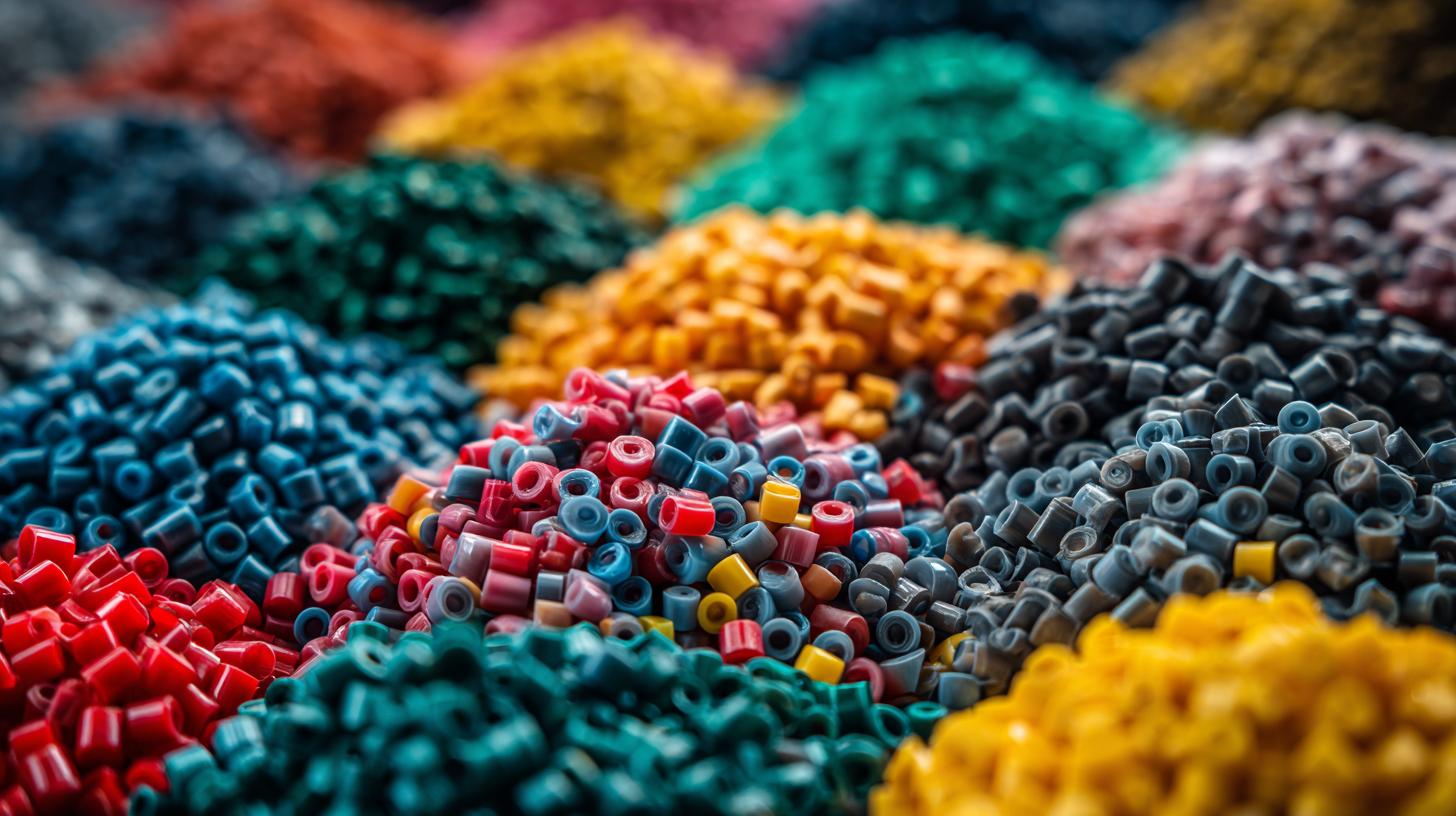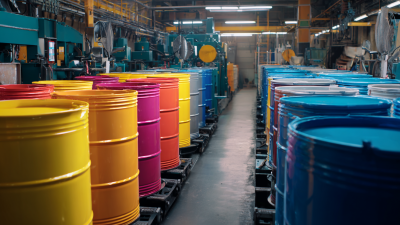- Home
- Masterbatch
- Additive Masterbatch
- Anti-Block Masterbatch
- Anti-Fog Masterbatch
- Anti-Microbial Masterbatch
- Anti-Oxidant Masterbatch
- Anti-Static Masterbatch
- Anti-Termite & Rodent Masterbatch
- Desiccant / Anti-Moisture Masterbatch
- Optical Brightener Masterbatch
- Flame Retardant Masterbatch
- Slip Masterbatch
- Polymer Processing Aid (PPA) Masterbatch
- UV Masterbatches
- VCI Additive Masterbatch
- Filler Masterbatch
- Black Masterbatch
- White Masterbatch
- Color Masterbatch
- Mono Masterbatches
- Special Effect Masterbatches
- EVA Masterbatch
- OXO Biodegradable Masterbatch
- XLPE Masterbatch
- Cable Masterbatch
- Nylon Masterbatch
- TPU Masterbatch
- Additive Masterbatch
- Compound
- Market
- Company
- Blog
- Contact Us
Exploring the Future of EVA Masterbatch: Trends and Innovations in Polymer Additives for 2024
 The ongoing advancements in the
polymer additives sector are setting the stage for a
transformative era in the production and application of
EVA masterbatch. According to a recent report by
MarketsandMarkets, the global masterbatch market
is projected to reach USD 19.9 billion by 2024, with EVA masterbatch
playing a pivotal role in this growth due to its superior properties such as
flexibility and thermal resistance. The increasing demand for
eco-friendly materials and sustainable manufacturing processes
is driving innovation in EVA formulations, with a focus on enhancing performance
while minimizing environmental impact. As we explore the trends and innovations
shaping this dynamic landscape, key developments in additives technology and
their implications will become essential for industry stakeholders aiming to
maintain competitive advantage and meet evolving consumer needs in
2024 and beyond.
The ongoing advancements in the
polymer additives sector are setting the stage for a
transformative era in the production and application of
EVA masterbatch. According to a recent report by
MarketsandMarkets, the global masterbatch market
is projected to reach USD 19.9 billion by 2024, with EVA masterbatch
playing a pivotal role in this growth due to its superior properties such as
flexibility and thermal resistance. The increasing demand for
eco-friendly materials and sustainable manufacturing processes
is driving innovation in EVA formulations, with a focus on enhancing performance
while minimizing environmental impact. As we explore the trends and innovations
shaping this dynamic landscape, key developments in additives technology and
their implications will become essential for industry stakeholders aiming to
maintain competitive advantage and meet evolving consumer needs in
2024 and beyond.
Understanding EVA Masterbatch: Composition and Key Benefits for Polymer Applications
EVA (Ethylene Vinyl Acetate) masterbatch is a crucial polymer additive that significantly enhances the properties of plastics utilized across various industries. Composed primarily of ethylene and vinyl acetate copolymer, EVA masterbatch offers a versatile solution for improving the flexibility, transparency, and impact resistance of polymers. Its unique composition allows for better adhesion to substrates and improved melt flow characteristics, which are essential for manufacturing processes like extrusion and injection molding.
The key benefits of EVA masterbatch extend beyond mere enhancement of physical properties. It acts as an excellent carrier for colorants and functional additives, enabling manufacturers to achieve vibrant colors and specific functionalities in their end products. Additionally, EVA is recognized for its low-temperature flexibility and resistance to UV radiation, making it suitable for outdoor applications. As industries move towards more sustainable practices, the incorporation of EVA masterbatch into polymer formulations can also facilitate easier recyclability, aligning with the growing demand for eco-friendly solutions in material science.
Exploring the Future of EVA Masterbatch: Trends and Innovations in 2024
Identifying Emerging Trends in EVA Masterbatch Innovations for 2024
The EVA masterbatch market is expected to experience significant growth in the coming year, with emerging trends likely to shape innovations in polymer additives. As the global agricultural film market is projected to expand from $11.96 billion in 2024 to $19.66 billion by 2032, this growth presents a fertile ground for EVA masterbatch developments. Key innovations could include enhanced performance characteristics, such as increased durability and UV resistance, which will cater to a rising demand in agricultural applications.
To stay ahead in the competitive landscape, companies must embrace innovative marketing strategies that resonate with contemporary consumer values. Emphasizing sustainability and the impact of EVA additives on reducing environmental footprints could build a stronger brand narrative.
Tips for companies include investing in R&D for new formulations that can meet stricter regulatory standards and consumer preferences for eco-friendly products. Additionally, collaborating with agricultural stakeholders could provide insights into practical applications of EVA products, thereby driving tailored solutions that meet market needs. Engaging in storytelling that highlights these innovations will further enhance brand identity and connect with a broader audience.

Implementing Sustainable Practices in EVA Masterbatch Production and Applications
The focus on sustainable practices in EVA masterbatch production and applications is becoming increasingly vital as industries seek to align with global environmental standards. The shift towards eco-friendly materials is motivating manufacturers to innovate, incorporating biobased and biodegradable additives into their formulations. This commitment not only caters to the growing consumer demand for sustainable products but also addresses regulatory pressures aimed at reducing plastic waste. By optimizing production processes and sourcing raw materials responsibly, companies can enhance the sustainability of EVA masterbatch, ensuring its relevance in future applications.
In addition to sustainability, the market for polymer additives, including EVA masterbatch, is poised for significant growth. With forecasts predicting a notable rise in related markets, the development and implementation of cutting-edge technologies and formulations will play a crucial role. Innovations such as enhanced barrier properties, improved thermal stability, and the integration of recycled materials are critical trends that are expected to drive the evolution of EVA masterbatch as manufacturers strive to meet both performance demands and sustainability goals. As the industry embraces these trends, ongoing research and collaboration will be necessary to develop solutions that satisfy the dual objectives of functionality and environmental responsibility.

Exploring Advanced Technologies in Polymer Additives for Enhanced Performance
The landscape of polymer additives is rapidly evolving, particularly in the realm of EVA masterbatch formulations. In 2024, advanced technologies are set to redefine the industry, enhancing the performance and versatility of these essential compounds. Innovations such as nanotechnology and biodegradable additives are gaining traction, enabling manufacturers to develop more sustainable products without compromising quality. These technologies not only improve the physical properties of the masterbatch but also contribute to environmental goals, responding to growing consumer demands for eco-friendly solutions.
Moreover, the integration of smart additives is becoming a significant trend. These additives are engineered to provide functionalities such as self-healing, UV resistance, and antimicrobial properties. By incorporating these advanced features, EVA masterbatches become more specialized and applicable across various sectors, including packaging, automotive, and construction. As the industry embraces these innovations, the focus will continue to shift towards creating high-performance materials that meet stringent regulatory standards while driving down production costs. The future of EVA masterbatch is bright, supported by these technological advancements that promise to enhance overall product efficiency and sustainability.
Exploring the Future of EVA Masterbatch: Trends and Innovations in Polymer Additives for 2024
| Aspect | Details |
|---|---|
| Market Growth Rate | 8.5% CAGR (2024-2030) |
| Key Innovations | Biodegradable additives, color-enhancing technologies, and anti-static properties |
| Application Areas | Packaging, automotive, and consumer goods |
| Regional Demand | North America, Asia-Pacific, and Europe |
| Sustainability Trends | Increasing demand for eco-friendly and recyclable materials |
| Technological Advancements | Use of AI for formulation optimization and improved consistency |
| Competitive Landscape | Emergence of niche players and collaborative partnerships |
Forecasting Market Changes: The Future Demand for EVA Masterbatch in Various Industries
The future demand for EVA masterbatch in various industries is anticipated to experience significant growth, driven by the increasing application of polymer additives across multiple sectors. As industries continue to innovate, the versatility of EVA masterbatch positions it as a key player in enhancing product performance and durability. The rising demand for sustainable and efficient materials has also propelled the shift towards advanced masterbatch solutions that incorporate eco-friendly additives and innovative technologies.
Forecasting market changes indicates that EVA masterbatch will likely witness a substantial increase in adoption within packaging, automotive, and consumer goods sectors. As highlighted by the accelerating growth in similar markets, such as the PET Type Antiblock Masterbatch, which is projected to expand significantly over the next decade, the EVA masterbatch market is expected to follow suit.
With industries striving for enhanced functionality and sustainability, the focus on advanced formulations and customized solutions will play a pivotal role in shaping the landscape of EVA masterbatch applications in 2024 and beyond.
Related Posts
-

Unlocking Creative Potential: How Color Master Batches Transform Plastic Manufacturing
-

Unlocking the Benefits of Anti Block Masterbatch: Revolutionizing Plastics with Enhanced Performance
-

Unlocking the Potential of Filler Masterbatch: Innovations in Polymer Manufacturing
-

Discover How Slip Masterbatch Revolutionizes Plastic Processing Efficiency
-

Revolutionizing Repair: Understanding the Science Behind Plastic Fillers and Their Environmental Impact
